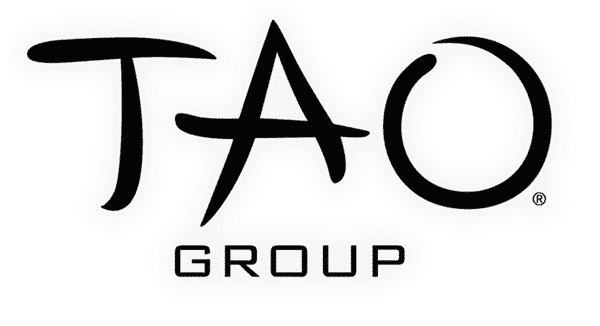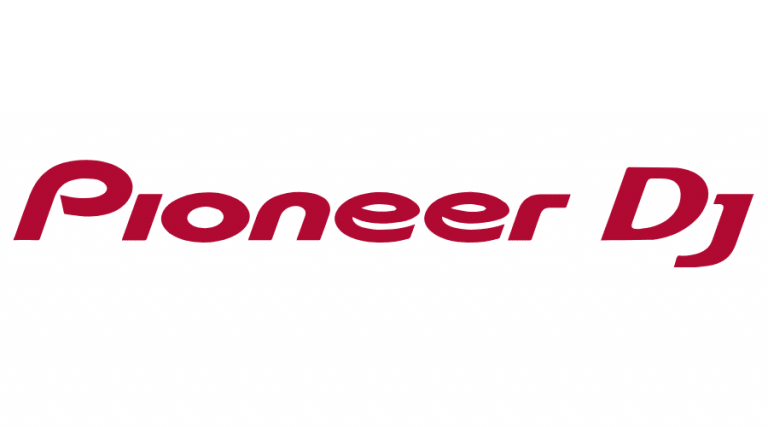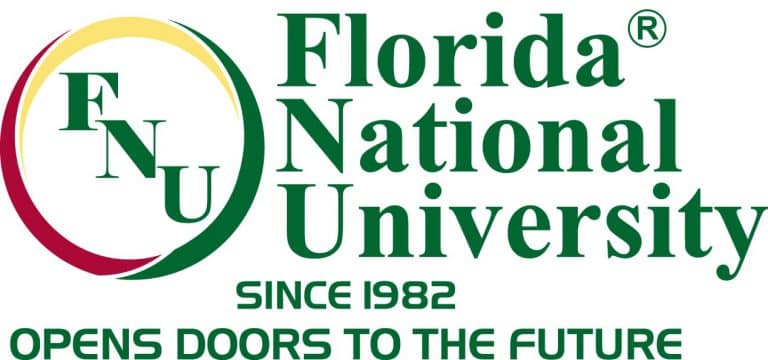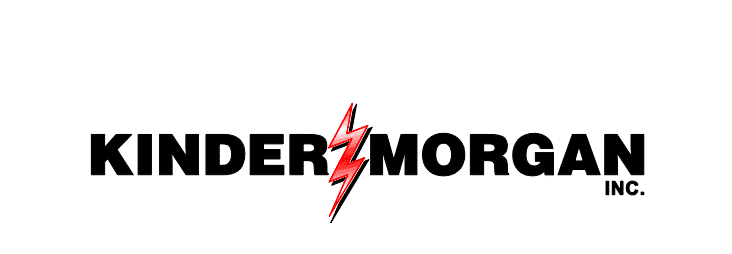In business, as in life, the only constant is change. You can see this when you track the history and evolution of successful brands. They never stay static for more than a few decades at most. Rebranding helps companies stay relevant in a changing market.
Launched in 1971, the Starbucks logo has undergone four significant shifts. Pepsi has rebranded a whopping 12 times over the course of 122 years. It doesn’t matter how big you get in the market – sooner or later, you will need to refresh your branding to retain your competitive edge. While it is inevitable, a rebranding exercise is also fraught with risk. If you don’t nail it, you could end up losing customers. Even Pepsi learned this the hard way in 2009 when a rebranding misstep at its subsidiary Tropicana led to a 20% drop in sales. This is why most companies think twice before committing to rebranding. If you are a business owner stuck in two minds about rebranding, you have come to the right place. On this page, you will find everything you need to know to make an informed decision. Let’s start with the basics.What is Rebranding?
Rebranding is a marketing project used by a company or organization to change the way it is perceived by the target audience. If you sell something in the market, you usually have a brand strategy and identity – a combination of a logo, slogan, brand colors, and overall presentation. This identity is essential for brand recognition – so that your customers can easily differentiate you from the competition. Rebranding involves making changes to various elements of this brand identity. A rebranding project can take up varying levels of complexity, depending on the situation. On the one hand, it can be something as simple as tweaking the color palette, making a font change, undertaking a logo redesign, or adjusting other brand elements. At the opposite end of the spectrum, a comprehensive rebrand can involve changes to some or all of the following:- Brand logo
- Slogans
- Brand/business name
- Target audience/new market
- Mission, values, vision
Restyling vs. Repositioning vs. Rebranding
Complete brand overhaul is not a singular process. Depending on the scale and complexity of the changes planned, a rebrand project can be either a simple restyling, a more complex repositioning, or even wholesale rebranding.Restyling
Also referred to as a “brand refresh,” restyling involves changes to the graphic elements of your brand. These include the logo, color palettes, and other slogans. You can make subtle tweaks, or make wholesale changes. But apart from these cosmetic effects, the rest of the corporate identity remains unchanged. Pepsi or Coca-Cola tweaking their logos over time would be a good example of brand restyling.Repositioning
In a brand repositioning strategy, you make wholesale changes to the way you communicate with your target audience. Along with visual changes, it could include changes in the language or tone used, the promises made to the audience, and its overall value proposition. You can also have brand repositioning without any restyling. Taco Bell is an excellent example of repositioning – they went from cheap Mexican fast food to a more upscale restaurant experience, with custom menus, open kitchens, and revamped interiors.Rebranding
This is the step where you make changes to every aspect of your brand essence and brand messaging. The end result is a completely new brand identity, often with new brand positioning and new brand guidelines. In extreme cases, the new brands may have no connecting links with their older business identities. Merck, the German-American chemical and pharmaceutical giant undertook a total rebranding process in 2015. From a more sober, mature presentation, the company decided to revamp into a vibrant, younger, more energetic brand identity backed by a strong brand marketing strategy.How Do You Know When It’s Time to Rebrand?
Changing your brand story can be a costly endeavor, especially if you go for a total overhaul of your primary brand strategy. You may have to spend considerable sums on new digital and offline marketing campaigns to spread the word about your new image. Moreover, you will also have to refresh visual elements on your websites, billboards, offices/outlets, product packaging, employee uniforms, or any other relevant spaces where your branding is displayed prominently. This is why even a simple logo refresh can sometimes make a dent in your balance sheet. And this is all before looking at the risk involved in rebranding – if it underperforms or fails, your business may experience additional losses through dip in sales. The point we are trying to make here is quite simple – firms don’t contemplate rebranding frequently. Stability and continuity hold a lot of value in business. And rebranding has the potential to bring considerable chaos into the mix. You need some very compelling reasons to even consider making changes to your brand identity. Here are some scenarios where rebranding may be the best way forward for your business:#1. You have a relatively bland or generic branding
Smart entrepreneurs understand the importance of brand identity. They often invest heavily in the creation of a unique and striking visual identity. It can play a pivotal role in helping any new business gain traction in the market. But many young business owners tend to neglect this part. To cut costs they go for low-effort, generic design templates in the early days of the business. This will severely hamper your firm’s ability to grow and attract new customers. If you operate in a market with many competing brands, a unique brand identity is vital for survival. For new businesses struggling to capture the attention of customers, rebranding is a vital tool.#2. Your branding is getting outdated
Our society and culture exist in a constant state of flux. New trends in design, technology, and pop culture appear with alarming frequency. Something that looked cool and hip in the 1990s will seem comical to modern audiences. If your business has been around for a few decades, it is probably high time to consider a complete overhaul of your brand. This holds true even if you have loyal customers and excellent market reach. Outdated branding can make your business look out of touch with the modern market. You will definitely struggle to impress and woo new clients. If your competition is sporting more modern brand logos and color palettes, you don’t really have any other option.#3. You are moving into new product segments
In the beginning, Nokia was a manufacturer of paper, not mobile phones. Tiffany & Co was just a stationery store before foraying into jewelry. Xerox only started making copier machines in the 1960s – it was a photographic equipment company before that. Many businesses have similar stories to tell. You often find opportunities in new markets, products, and even different price segments within your old market. When you take on these opportunities, the nature and story of your business also change drastically. When that happens, you often end up with outdated branding that is no longer fit for purpose. After all, the core purpose of a brand identity is to create a connection with your target audience. As you start selling products and services in a different market/segment, your target audience also changes. At this point, you will have to update your branding to sync it with the new customer profiles and your overall business strategy.#4. You are moving into international markets
Companies trying to sell their products in overseas markets are often forced into a partial rebranding. Sometimes, it is due to local laws – in Quebec, KFC has to sell its fried chicken under its French initials – PFK or Poulet Frit Kentucky. Some brand names may sound funny or offensive to foreign ears. In such circumstances, rebranding is highly warranted. Cars like the Honda Fitta and Mazda Laputa had to be rebranded because they had vulgar connotations in Scandinavian and Spanish languages. Then there are those occasions where another company in the target market already owns the trademark to your brand name or logo. Burger King was forced to rename its outlets in Australia to Hungry Jacks for this reason.#5. You are involved in a merger or acquisition
This one is fairly easy to comprehend. When two different business entities merge together, several things can happen. In one arrangement, the older brands may exist as subsidiaries. Or they may merge together to create a new entity. In the latter case, a full rebranding is often necessary. It is the best way to create a clear identity that best reflects the current status of the business organization. Sometimes, you may even manage to get away with a partial rebrand if the core business remains unchanged.#6. You want to move on from a crisis or PR problems
Many brands get tarnished due to controversies. Often, the damage is irreparable and the best option is to start things afresh with a new brand identity. Uber used this tactic to great effect when stories of toxic work culture and mistreatment of drivers impacted its popularity. With a new brand identity, the company chose to show that it had embraced a more positive, employee-friendly culture. The tobacco company Phillip Morris rebranded to Altria in 2003 to move away from its historic links to cigarettes and other tobacco products. Perhaps an extreme example of this strategy is the rebranding of Blackwater Worldwide into Academi. After a series of scandals involving murder by its employees, the private military corporation chose a new brand identity that focuses more on its security training services.#7. You want to go in a new direction or adopt a different strategy
Facebook is probably the best example of this scenario. The corporation owning the Facebook platform changed its name to Meta in 2021. This move sends a clear message about the company – it is shifting its focus into the future technology called “the metaverse.” Based on virtual reality, metaverse will create a whole different way of connecting to the internet. Mark Zuckerberg, the founder of Facebook, wants his company to get a headstart in the transition from the traditional internet to the metaverse. Similarly, British Petroleum Amoco rebranded into BP or “Beyond Petroleum,” with a new green sunburst logo. It was part of a strategy to reposition the company in a new, eco-friendly avatar. Google became Alphabet to better reorganize its profitable and loss-making divisions.When Should You Not Consider Rebranding?
While there are many reasons to consider changes in your brand identity, there are several other scenarios where it may not be a prudent idea:You are simply bored with the existing brand
Some business owners get restless seeing the same old brand name, logo, and color palette. This is not a valid reason to move forward as it does not take into account the needs of the most important group of people – your customers. Always remember that you create a visual identity to cater to your target audience. If they are still fine with your current branding, there is no reason to fix something that is not broken. If you are bored, do some customer surveys to see if your audience shares that feeling.You merely want to create some buzz in the market
Many businesses make unnecessary changes to perfectly viable brand identity. The reason is often desperation. In a bid to boost sluggish sales, or due to limited successes in marketing campaigns, they jump to rebranding as the solution. To an extent, this can deliver positive results, but they are usually short-term in duration. With already weak sales and marketing, the rebrand results are generally unsustainable. In the long term, your business may end up in a worse shape.You are looking for a shortcut to make an impact
Managers are always eager to deliver quick results. In their quest for shortcuts, they often rely on rebranding. Unfortunately, the rebrand efforts are not matched by essential upgrades in other departments within the company. This can create a disconnect between the new brand identity and the actual business entity. When those individuals at the helm of a business put their ego ahead of the actual interests of the company, the results are almost always negative.How to Get Started with Rebranding?
Corporate rebranding is a complex, multi-step process. Think of these steps as different chapters in a book. The ideal starting point or prologue in this rebranding strategy would be a series of questions you need to ask about your business. The answers to these questions will help you decide the nature and scope of the rebranding.#1. Important questions to ask before a rebranding process
#I. Has your target audience/market changed?
Is your business still attracting the same type of customers as before? This is an important question that may deliver surprising answers on closer inspection. Often, a product or service can attract new demographics that were never on your radar in the beginning. For example, some children’s toys may attract adult collectors. Sometimes, you may find that the market itself has changed due to the arrival of a different product or new technologies. These changes can often erode your customer base. The aim of this question is to help you identify the core audiences for your branding. Any rebrand process has to focus on these demographics. Without insights into this crucial factor, the rebranding effort is doomed to fail.#II. Do you need to complete new competitor research?
After your customers, or perhaps along with them, your competition should be a top priority. This arena will also experience a lot of churns – new firms can rise up in a flash and dominate your segment if you are not careful. Take the example of Tesla – the electric car maker is just 18 years old. Yet it has managed to create at least a 10-year competitive advantage over much older, more experienced automakers like Ford, Toyota, and Volkswagen. If you are experiencing increased pressure from new rivals in your market, their branding strategies need to be taken into account. Otherwise, your newly created brand identity may be too similar or just lackluster in comparison.#III. Have your brand values changed?
Modern customers are far more conscious of brand values than previous generations. Sustainability, fair trade, community outreach, gender sensitivity, and inclusivity have become high priorities for businesses looking to attract new and young demographics. Many businesses have made suitable changes to their brand values to adapt to the headwinds of change in the modern market. Have you also embarked on a similar mission in recent years? If the answer is yes, you probably need to factor those changes into your new brand. For instance, Gucci has always been a go-to brand for extravagance, sleek, and sexy fashion. While retaining that traditional flamboyance, the company expanded its brand to include progressive values of gender fluidity and empowerment with great success.#IV. When is the last time you looked at your company’s mission statement?
A mission statement defines the core reason for the existence of a business. It is usually big aspirational ideas that go beyond simple profits. Furthermore, many organizations don’t pay much attention to their mission statements. Others don’t have a brand that correctly reflects their mission statements. A few don’t have any mission statements or statements that are not suited for their organization. All these scenarios need to be addressed during the rebranding process. Some businesses need to tweak or realign their branding with the mission statement. Others need to make key operational changes within the business so the brand can better live by the stated missions and values. And in some cases, the rebranding project should also involve brainstorming a proper mission statement for the business.#V. Will your business model need to change as well?
Businesses are often forced by circumstances to adopt new business models. The rise of new technology, economic pressures, and changes in regulations can all play a part in forcing this decision. Such major changes can often create a de-sync between the business and its original brand identity. Changes in the business model often affect customers, who are the cornerstone of any brand identity. As a result, a rebranding strategy should always take into account any changes over the years in the business model of the company.#2. Assemble a Team for the Rebranding Project
Once you answer the five important questions listed in the previous section, you will get a fair idea of the urgency of rebranding your business. If the answers indicate that you need changes in your brand identity, it is time to get a team to work on the project. Rebranding is a creative process that involves multiple disciplines including marketing, sales, visual design, copywriting, and customer outreach. The team should involve professionals with domain expertise in all these fields for maximum impact. The larger companies have the resources to build an in-house team for rebranding. There are some advantages to relying on existing staff from within the organization. Since they are intimately familiar with the inner workings of the firm, they will have better insights. Correlating with this, many of the smaller businesses may not have the resources to create an entire rebranding team in-house. In such a scenario, outsourcing offers a viable alternative. You can bring in PR/marketing agencies or freelancers to get the job done. Even many of the bigger corporations hire outside talent for major rebranding initiatives. Relying entirely on business insiders may blunt the effectiveness of the whole project. If you want fresh ideas, an outside perspective can be vital. If you decide to hire an agency, it is important to create an internal task force to liaise with the outside talent. The PR professionals will need critical inputs about various aspects of your business. Combining outside talent with company insiders will guarantee better results.#3. Evaluate Your Brand and Identify Problem Areas
Once assembled, the rebranding team will need to conduct a thorough review of your current branding strategy. This is essential to uncover problem areas that need require the most attention. As already noted, a rebranding strategy does not require a total overhaul of all aspects of the business. In the vast majority of situations, businesses only need to plan for a minor brand restyling or partial rebranding/repositioning. Here are some common problem areas that can pop up during a branding audit:- Outdated or inappropriate logos, slogans, color palette, and typography
- The need for name changes due to crisis, scandals, or trademark issues
- A shift in brand positioning due to internal changes
- Lack of adequate social media presence
- Outdated app design, web design
- Lack of partnerships with online influencers and affiliates
- Stale and outdated décor and store locations/office premises
#4. Conduct External Research and Data Collection
Internal business data alone will not give your rebranding team the information they need. Since your branding is oriented towards the market, you need external research in two main areas for strategic inputs:Audience/Demographic research
The target audience of a business evolves over time. While these changes are often subtle, they can also be quite drastic in certain situations. You can attract entire new demographics with new business models, values, and product ranges. Due diligence here involves defining the target audience as a baseline. Check who is actually buying your products. When you compare this data with your original target market, you will get a good idea about the changes that have occurred over time. Once you have established the baseline, it is time to conduct further research on this customer base. Use surveys and user tests to gather opinions directly from the target audience. The outreach can be done through focus groups, or online surveys if you are on a tight budget. Try to find out their opinions about your current brand identity. Is it distinctive and memorable when compared to the competition? Do they like the color palette/logos/typography of the brand? Is the slogan catchy and enjoyable?#5. Competitor research
You cannot create a perfect rebranding strategy based on your target audience alone. For that, you also need to look at what the competition is doing. To ensure unique brand identity, you need a clear idea of things to steer clear off during the creative process. If a major rival uses a distinctive color palette, you might want to go in the opposite direction to stand out. Many brands use this approach – while Intel uses distinctive blue shades for its processor branding, rival AMD relies on a bold palette dominated by red hues. Analyzing the competition can also give input on branding strategies that actually work, and those that are best avoided. Learn from their mistakes and successes to improve your new brand. The size and scale of their marketing campaigns may also hold crucial insights.#6. Rebuild Various Aspects of Your Brand
Once you have completed the research and finalized the scope and scale of your rebranding efforts, it is time to get started with the creative process. Every step along this process requires considerable care and attention to detail.#I. Renaming your company
This is a step that can kill all your brand recognition and online search traffic in a flash. You will have to allocate significant funds for a recovery process after rebranding. So, take this extreme step only if the benefits outweigh these risks. When picking a new name, focus on picking one that merges seamlessly with your brand personality, vision, and values if possible. Don’t just go for any catchy or cool-sounding name. There are several options here, including- Create new words
- Use meaningful words from other languages
- Create acronyms
- Add a prefix or suffix to your existing name
- Remove a part of your old name
- Ensure that the name is not trademarked by some other business entity
- See if a related/relevant domain name is available online
- Ensure that the name is easy to spell and pronounce
#II. Redesigning your logo
The logo is a critical component of a brand identity. It is the piece of information that sticks easily in the minds of your target audience. A powerful symbol that represents your entire company, a well-designed logo can amplify all your marketing campaigns and strategies. At its core, a company logo must have these features:- It embodies your brand
- It is instantly recognizable
- It is unique and timeless
- Simplicity – you don’t have to push in as much symbolism as possible inside your company logo. The best logos are simple – the Microsoft Windows logo, the Nike “swish” logo, and the Mcdonald’s yellow arched “M” logo are all great examples.
- Relevance – whenever you are considering a new logo, don’t forget to take your target audience into consideration. Pick symbols that work best at communicating a unique brand identity to your potential customers.
- Continuity – unless you are building a whole new corporate brand identity, you want to retain as much of your old logo as possible. This is vital for brand recognition – carrying over elements of the previous logo makes it easier for customers to identify your brand.
- Longevity – no business can afford to change its logos every few years. Pick a logo that you can carry for the long term. Pick options that best align with your long-term vision, values, and growth strategy.
#III. Switching to a new color palette
For many companies, some colors are sacred and cannot be altered. You cannot imagine Coke without its trademark red or McDonald’s as anything but yellow. Starbucks has that verdant green palette while Google uses the instantly recognizable blue-green-yellow-red. But not all businesses have the luxury of starting out with the right color palette. New companies often struggle to nail this aspect of their brand identity. As your company grows bigger, you may want to consider a palette refresh. Color psychology can play a huge role in deciding the appropriate shades. Some colors are considered “sober” or “mature” while others come across as “young” and “energetic.” Pick shades that speak to your target audience for the best results. These days you also have to worry about how your colors show up on digital screens. Ideally, you want shades that look the same across different media – print, digital, and other surfaces both indoors and outdoors. Last but not least, you also have to take into account the competition and market trends. Some sectors like healthcare and research focus more on mature and soft shades. Sportswear and other consumer-focused brands often opt for flashy color palettes.#IV. Looking at other elements in your brand guidelines
Apart from the company name, logo, and color palette, there are several other critical elements that complete the visual presence of a brand. These include:- Slogans or catchphrases
- Brand fonts
- Content themes
- Brand hashtags
Cross-Platform Execution and Social Media Refresh
In the past, brands only had to worry about how they looked on print media. Soon, radio and TV arrived on the scene. For decades, these three were the holy trio of marketing. But the situation is far more complicated these days. We have computer screens, smartphones, and other digital media dominating the modern marketing landscape. And even within smartphones, we have website branding, app-based branding, and brand presence on social media. Any rebranding effort has to take into account the different platforms the company uses to reach out to customers. This can involve the following:- Updates to all website content, including new brand imagery, palette, and search engine optimization (SEO)
- Updated online ads
- Refreshed social media accounts on Facebook, Twitter, and Instagram
- Updates to existing apps, or roll-out of brand-new apps




































